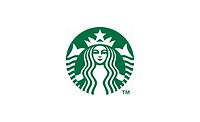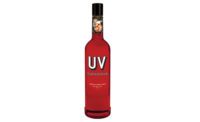![]()
The More the Merrier
Co-branding is a great way for two otherwise unrelated
brands to reach new and existing consumers
A new movie is about to hit theaters, and to get the word out
everything from carbonated beverages to breakfast cereals become co-branded
marketing vessels that feature images from the movie prominently displayed
on their packages. While movie and sports are the most common product
marriage, other kinds of co-branding are gaining prominence, especially
within the beverage segment.
Beverage co-branding can be a match made in marketing
heaven because beverages — especially carbonated beverages —
have a high consumer penetration, low price points and great marketing
support.
“When companies co-brand, they are trying to
reach a particular audience in order to facilitate a transaction,”
says Claire Rosenzweig, president of the Promotion Marketing Association
(PMA), New York. “When they look at what’s going to be the
factor that will convince the customer to buy their product, co-branding is
a road that offers shared equity because although the goals can be
multi-layered, each partner benefits from their partner’s brand
promise. Whoever the partners are, there’s a shared visibility.
Whether it’s NASCAR, a movie or a sports figure on the bottle, it
means something to the consumer the company is targeting.”
Co-branded beverages often blend the best attributes
of two well-known consumable entities. During the past few years, 7-Eleven
Inc., Dallas, has teamed with Jolly Rancher, Life Savers, Willy Wonka Laffy
Taffy, and Wrigley’s to offer co-branded candy Slurpee varieties.
More recently, the company launched SoBe, Crystal Light, Diet Pepsi,
Mountian Dew, and Starburst Orange and Cream flavored Slurpee varieties.
This past spring, the company launched a
limited-edition Strawberry Twizzlers-flavored Slurpee with a companion
Twizzlers Strawz candy that matched the Slurpee flavor profile.
To develop the paired items, 7-Eleven worked with
Coca-Cola and Hershey Food Corp., the maker of Twizzlers candy, for a year
prior to the launch. “This is a perfect example of team
merchandising,” says John Ryckevic, 7-Eleven category manager for
Slurpee and fountain drinks. “We approached two of our major supplier
companies, Coca-Cola and Hershey, and they liked our idea of a Slurpee
drink and straw tie-in.”
Ryckevic says the Strawberry Twizzlers-flavored
Slurpee tastes exactly like the candy, and adds that candy-flavored
Slurpees have proved extremely popular among those aged 12 to 18.
7-Eleven currently offers four edible straws: Sour
Strawberry and Blue Raspberry Slurpee straws, a Paintbrush Gum Straw that
turns a Slurpee drink colors when swirled, and the new Twizzlers Strawz.
When the first candy straw was introduced in May 2003, the edible beverage
accoutrements quickly caught on, becoming one of the top five non-chocolate
items sold in 7-Eleven stores.
“A candy straw that you can use to drink and
then eat seemed a natural tie-in, not to mention that both appeal to kids,
who are core Slurpee drinkers and candy purchasers,” says Derek
Schmitt, 7-Eleven category manager for candy, gum and mints.
Co-branding for a causeThere’s
a relatively new breed of co-branded beverages that are substituting the
likes of movies characters and sports figures
with logos for charities and other civic-minded causes to generate
awareness and proceeds for cash-strapped and donation-driven organizations.
In 1993, a firefighter from Tennessee and an Indiana
bottler created a small but successful line of Firefighter branded canned
sodas to sell at local fundraising events. In 2003 they approached SoBe
co-founder John Bello and Bruce Burke, former advertising and marketing
executive for the National Football League, with the idea of expanding
their small local concept into a national brand. After months of research
and testing to validate the viability of the concept, Firefighter Brand
Products was born.
Firefighter Brand Products, comprised of Firefighter
Brands LLC and Firefighter Beverages LLC, based in Norwalk, Conn., are
private, for-profit companies that create and market
“better-for-you” foods and beverages that benefit firefighter
causes on a national and local level. Firefighter Brand Products donate 25
percent of annual net profits to firefighter-related organizations and
causes. In addition to chili, kettle potato and tortilla chips, the line
also includes four varieties of soda — Courageous Cola, Firelight
Diet Cola, Backdraft Root Beer and Incendiary Citrus. The sodas boast 25
percent less sugar than other leading brands.
“The strength of the Firefighter Brand concept
transcends our better-tasting, better-for-you products,” says Bello,
founder and chief executive officer of Firefighter Brands LLC. “It
proves that we can change the way business, civic organizations and
communities come together to create real value.”
In the water segment, Euphoria Water, Miami Beach,
Fla., co-brands its bottled water with various charitable organizations to
not only raise money for the charity but also to build awareness for those
causes because the charity’s logo is featured prominently on the
label. “By co-branding with Euphoria, charities earn between a 1 and
4 percent contribution from the sale of every bottle of water that features
that specific charity,” says Euphoria Chief Executive Officer Bernard
Werner. “More importantly, every time somebody picks up the bottle
with the charity’s logo, an impression is made, promoting awareness
of the charity.”
Euphoria’s co-branded waters are currently sold
at retail in California, Arizona and Nevada, and are also distributed at
charity events. “Charities typically rely on events to generate
money,” Werner says. “During the March of Dimes’ annual
Walk America events, Euphoria supplied a March of Dimes co-branded water,
which was the sole water brand of the event.”
In addition to March of Dimes, Euphoria has partnered
with City of Hope, Make-a-Wish and Special Olympics of Northern California.
By the end of 2004, Werner says Euphoria will have contributed $250,000 to
charity since the company’s origination three years ago.
Along the same water vein,
Atwood, Calif.-based America’s Schools Program (ASP) uses bottled
water as a co-branding medium to raise funds for America’s public
schools. The company’s co-branded bottled water division partners
some of the nation’s biggest corporations with K-12 schools across
the United States in an effort to provide discretionary funds for programs
such as athletics, music, arts, drama and technology. ASP sells affordably
priced, top-quality water to schools for fundraising, as well as to
regional and national retailers and wholesalers.
“Corporations,
retailers, wholesalers and school clubs now have the opportunity to share
in their support of education by co-branding their image, logo or message
with the America’s Schools label,” says Kimberly Wordsworth,
National Director of America’s Schools Bottled Water Program.
“The flexibility of the co-branded program allows the purchaser to
use their own design bearing the ASP logo, or they can use the ASP label
template bearing their logo, message or image. Proceeds from the sale of
every bottle and/or case help to support America’s
schools.”
Avoiding pitfalls
Beverage co-branding makes
economic sense, as long as the compatibility of
the consumer target is shared. “Brands have permission zones and if
you want to venture out of your permission zone you should do it in
conjunction with another brand name,” says Simon Williams, president
and chief executive officer at the Sterling Group, a New York City-based
brand consultancy. “Co-branding gives brands permission to enter new
categories, stretching a brand farther, while still retaining
credibility.”
Williams likens the co-branding arrangement to a
dance, with each brand as a dance partner. There is one lead brand and one
support brand. “Only one brand can lead because if the bottle looks
like half of one brand and half the other brand, you run the risk of making
too many confusing compromises,” he says, adding that the primary
pitfalls of co-branding are complexity, corporate compatibility and
clarity. “Companies should always be wary of half-baked co-branding
ventures. Partnering companies with fundamentally different brand cultures
can be risky. Egos can become an issue when companies get pushed out of
their comfort zones. You should only consider co-branding if it’s to
the advantage of both brands.” BI



